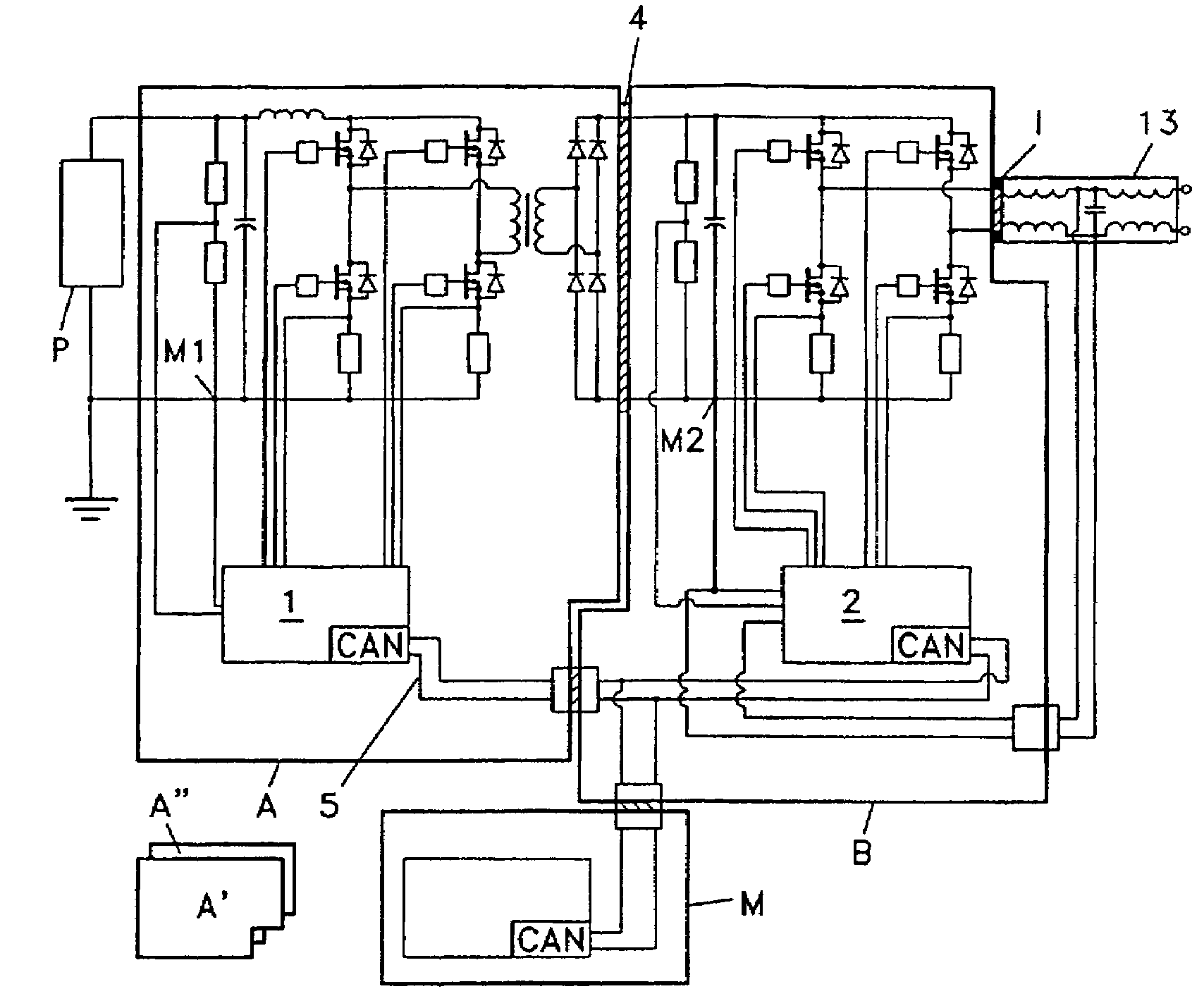Power converter
a power converter and converter technology, applied in the direction of dc-ac conversion without reversal, dc network circuit arrangement, mechanical energy handling, etc., can solve the problem of limited number of additional dc/dc converters, achieve low harmonic, simplify gate drives, and smooth current and voltage delivery
- Summary
- Abstract
- Description
- Claims
- Application Information
AI Technical Summary
Benefits of technology
Problems solved by technology
Method used
Image
Examples
Embodiment Construction
[0043]FIG. 1 shows how a DC / DC-module A is connected to a DC-bus 3, which is common to several other DC / DC-converters. They are all feeding energy into the DC-bus, and DC / AC-inverter B taps the DC-bus and converts the energy into a grid voltage and grid frequency. A filter 13 as described later in this application may be used. Such filter is also a module, as shown in FIG. 2. The modules A and B are connected to each other via an interface 4 shown on FIG. 2. Such interface is preferably an easy insertion interface. The modules communicate via a serial bus 5. The CAN bus is preferred. The control of the system consisting of modules A and B is divided into two control circuits 1 and 2 galvanically isolated from each other. In this embodiment, a micro controller regulates the DC / DC-converter, and a Digital Signal Processor regulates the DC / AC-inverter. The DC / DC-converter and controller are placed on a first module A and AC / DC-inverter and controller are placed on a second module B. In...
PUM
 Login to View More
Login to View More Abstract
Description
Claims
Application Information
 Login to View More
Login to View More - R&D
- Intellectual Property
- Life Sciences
- Materials
- Tech Scout
- Unparalleled Data Quality
- Higher Quality Content
- 60% Fewer Hallucinations
Browse by: Latest US Patents, China's latest patents, Technical Efficacy Thesaurus, Application Domain, Technology Topic, Popular Technical Reports.
© 2025 PatSnap. All rights reserved.Legal|Privacy policy|Modern Slavery Act Transparency Statement|Sitemap|About US| Contact US: help@patsnap.com



